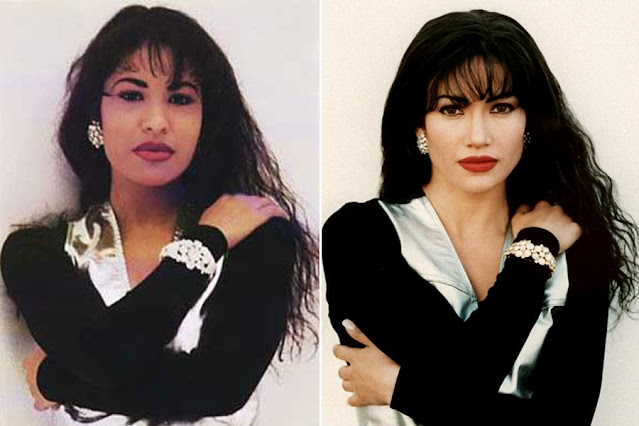One Latina at a time (Pau Brunet – Core Post #5)
For ages, Hollywood has treated audiences like 5-year-old kids. But I will not fight that today, as in the GPT era, one of the most common questions was, "Can you explain this to me as a 5-year-old kid?" These dynamics can be seen in other aspects of our film industry, and as a foreign and Hispanic, something that I noticed from Hollwyood is their impossibility to bet on more than one Latino or Asian talent simultaneously. Things are changing, but it has been almost 30 years since "Selena" premiered in theaters, 32 since the real Selena was killed, and 80 years since Carmen Miranda wore the Tutti Frutti hat.
Part of this lack of focus on more than one Latina talent responds to diverse issues within Hollywood: the lack of complex Latino and Latinx characters, their sexualization and objectification, and their bankability. It is easy to answer the last two issues: if you have one "hot Latina," it will be a commercial value connecting with some audiences within the Latino community and the male gaze. If you have too many, the "value" of that object decreases. Carmen Miranda and Jennifer Lopez were the "hot Latinas" of their times, and I would include other Latinas such as Rita Moreno in the 1960s and María Conchita Alonso in the 1980s. As both Shari Roberts and Frances R. Aparicio point out in their texts, the "hot Latina" was created from a blended idea of Latinidad, a continental identity without sovereignty, that was designed to appeal to Latin-American audiences. This commercial appeal happened in the late 1930s and 1940s during WWII and the "Good Neighbor Policy" times and was looking for commercial successes from Argentina to El Caribe (Roberts). During the 1980s, commercial interest shifted to Mexico and the States primarily because the Mexican Golden Age of cinema started to fade out, and the migration between both countries began rising during those times.
Because of that, these celebrities were crafted with stereotypes that were represented mainly by their bodies, the "spicy Latina" or the "hot Latina" with a particular kind of brunette beauty with some extra curves (aka the title of the film "Las mujeres de verdad tienen curvas"). During these times, characters were not well developed and were far from being protagonists. And here is where something such as "Selena" was important. The film was one of the first commercially successful movies solely created around Latinx and Latino audiences in the States. Some other movies happened before ("Stand and Deliver," "American Me," or "Mi familia" among others), but they were primarily focused on a male perspective. What happened with "Selena" and Jennifer Lopez was unique because it was commercially successful as a film entirely designed for Latino/x audiences and provided critical acclaim for Lopez's impersonation of Selena. Then, Lopez got the "Latina crown" and became what others had been before, for good and bad.
In that context, we need to understand Lopez's star persona as different from other white and American celebrities. Her expectations and limitations were already placed there, and it was not until Sodenbergh's "Out of Sight" (1999) that she moved out of that Latina limitation and became something more significant. Lopez spent most of the 2000s forging an incredibly powerful career in both music and cinema. She achieved being wealthy enough to end up producing and controlling her own projects, something that none of the other Latinas before was able to do.
Today, there is some criticism around Lopez, either because of her bossy/diva attitude that some social media users speculate or because of her impossibility of being the only ONE anymore. However, we are failing to see that her actual position is not a failure, it is the response to some massive changes in our culture, in which she played a critical role. Today, we have more Latinas and Latinos in TV shows, movies, and music than ever. Their identities exist beyond that blended identity created in the past. However, because of that massive diversity, Latino entertainment in the States still has to deal with many prejudices from Hollywood and the complexities of a diverse population.

Comments
Post a Comment